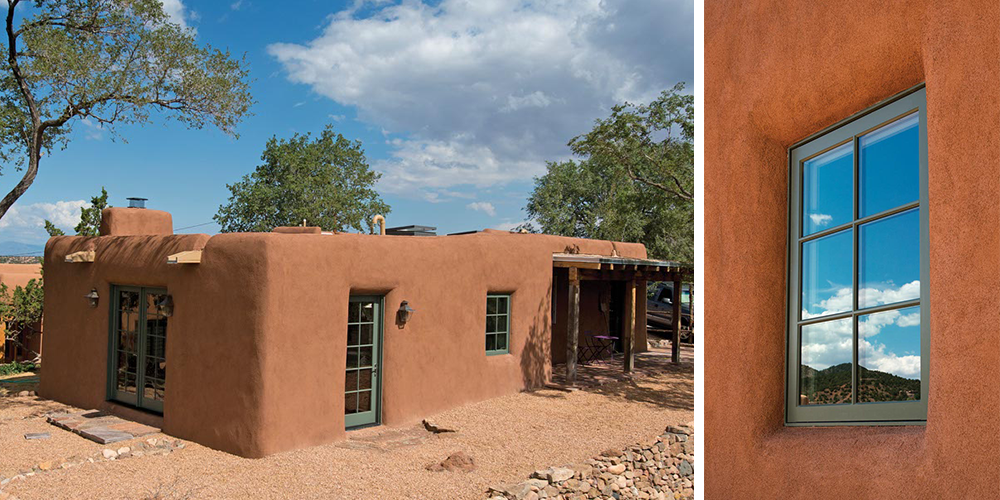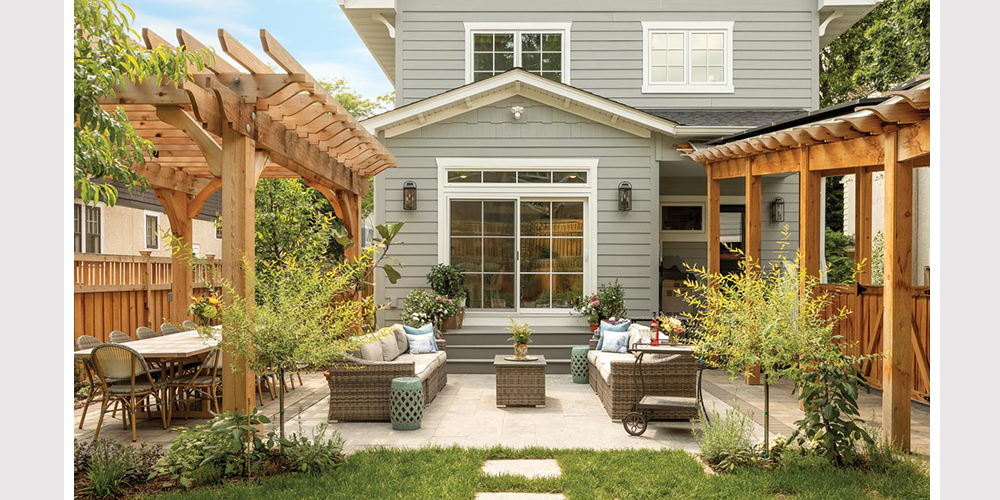Architects are designing resilient, energy-efficient homes that are built to meet our evolving reality and last for generations. More of these change-makers are adopting “passive house” principles and standards to conserve resources and reduce our environmental footprints.
The passive house concept is quite simple: create ultra-efficient and thoughtfully designed homes that require extremely small (and in some cases, zero) amounts of energy to heat and cool. High-performance windows and doors play active roles in strategically managing ventilation and thermal performance for sustainable, intentional, comfortable living.

Passive house ideals have been practiced for millennia. They are exhibited in every dwelling constructed with natural materials, sited to suit local conditions, and built with deference to its environment and climate.
Global examples throughout history range from ancient rammed-earth round houses across southern Africa, to mudbrick buildings of Mesopotamia and Aboriginal Australia, to clay-constructed structures through central Asia, to the Indigenous Pueblo adobe villages in what is now the American Southwest, to the thatched and sod homes of the European Middle Ages. Providing protection against extreme temperature swings, the thick, earthen material’s high thermal mass keeps the interior cool when it’s hot outside and warm inside when it’s cold outdoors.

Taking inspiration from centuries of examples, the contemporary notion of passive house design gained traction in the U.S. and Europe during the Energy Crisis of the 1970s and ’80s. Experimental homes featured organic and geometric forms, super-insulated walls, renewable energy power generation, and windows for daylight and natural ventilation.
In general, passive houses must capitalize on solar heat gains in colder climates and mitigate solar heat gain in warmer climates. The placement, operation, and composition of a home’s windows and doors are essential to accomplishing this. Before the 1980s, one of the major downsides of passive homes was the lack of high-performance windows. To minimize unwanted solar heat with single-pane glass, windows were very small or needed to be covered with insulation depending on the season, climate, or weather conditions.

Recent glass and glazing innovations expanded the view, daylight opening, and performance possibilities. In addition to the 1980’s advent of low-emissivity (Low-E) glass coatings, window and door framing now could be efficiently thermally “broken,” where the exterior and interior members are separated and insulated to mitigate heat loss and improve energy performance. Today, thermally broken frames are readily available and typically paired with double- and triple-glazed insulated glass units with Low-E and other “smart” coating options.

As new technologies and manufactured materials proved effective, modern passive design and building principles became established and accepted. Commonalities include:
- Airtight envelopes
- Moisture control
- Continuous insulation
- Elimination of thermal bridging
- Balanced ventilation with heat recovery
- High-performance windows and glazing

Locally tailored and globally applicable, the PHIUS building standards provide a path to a zero-carbon built environment. Their quality-and-conservation-first framework is grounded in building science, best practices, and the quality assurance necessary to deliver optimal results. PHIUS building standards ensure a home is:
- Thermally comfortable
- Maintaining safe and healthy air quality
- Resilient to climate change
- Durable through years of use
- Affordable to occupy and operate

Along with PHIUS Certified Projects being among the most energy efficient and comfortable buildings in the world, PHIUS Certified Products guarantees windows, doors, and other fenestration products perform to passive standards.
Passive house performance criteria are dependent upon a number of factors, including Low-E coatings, lite divisions, and elevation placement. The PHIUS Certified Data for Windows program reviews manufacturer-supplied specifications for window products and recommends products that are suitable for passive houses by their climate zones.

Kolbe Window & Door products are continually improved to meet or exceed today's building codes and standards for energy efficiency, including a choice of PHIUS Certified Products. In addition to meeting stringent standards for performance, the success of a passive house design ultimately involves customized solutions.
Kolbe’s range of PHIUS certified products means that American-made, carefully crafted, made-to-order windows and doors for an entire passive house project are available from one manufacturer with a multitude of design options. Operable windows are available as crank-out awnings and casements. Inswing doors, direct set, and picture casements complete the certified offering. Discover high-performance triple-glazed products with either metal or wood framing. A nearly unlimited range of finish colors allow for a personalized expression that complements your passive house project’s environmental statement and leaves a lasting, positive impression.